
Waterfalls stand among the world’s most captivating natural wonders, casting a spellbinding spectacle as water gracefully cascades downward. Travelers from across the globe embark on journeys spanning thousands of kilometers to witness and immerse themselves in the enchanting allure of these cascading marvels.
What is a Waterfall and How Is it Formed?
Waterfalls materialize within youthful river systems, a result of a deep and narrow channel that accommodates their formation. Such natural wonders emerge within a river’s upper course, where a stratum of robust rock lies adjacent to a layer of more yielding stone. Referred to as bedrock, these strata comprise the river’s loose sand, soil, and sediment, coursing swiftly along its steep gradients.

Initially, waterfalls can originate as rapid currents. The river courses over rugged rock, while the underlying soft stone undergoes erosion. This erosion of the softer rock transpires at a swifter rate compared to the more resilient rock, causing the latter to elevate above the riverbed below. The erosion process of these stones varies based on the strength and thickness of the rock, as well as the velocity of the flowing river.
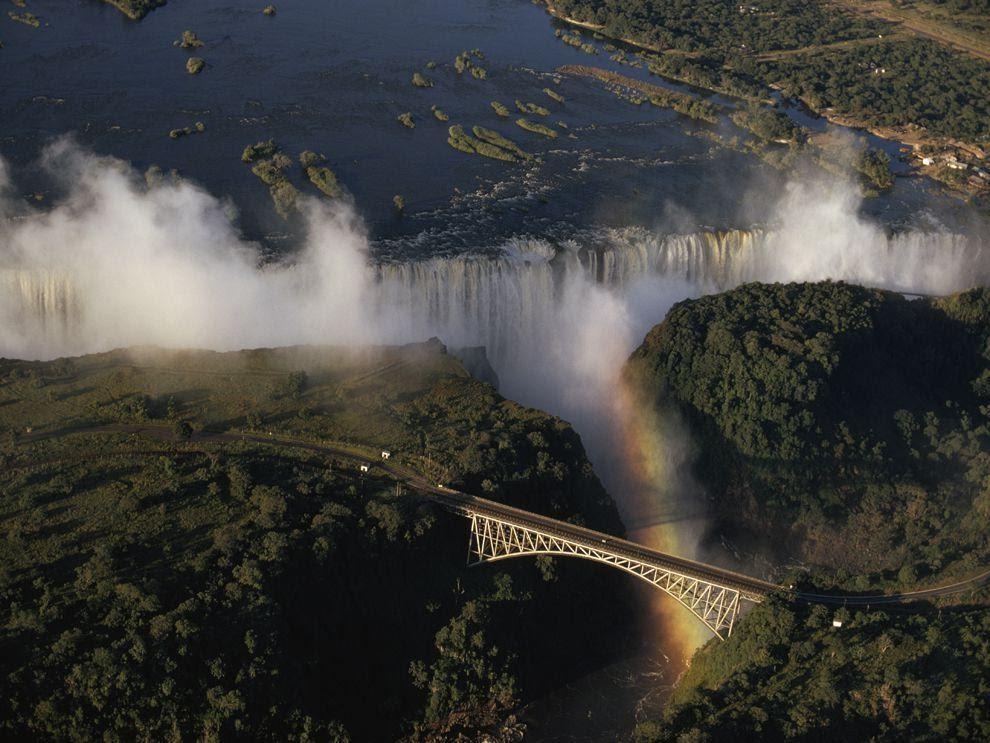
Through a process known as abrasion, which entails the erosion of rock surfaces due to the friction between stones and moving particles carried by the river, the genesis of a waterfall takes shape. Gradually, a vertical descent emerges as the delicate rock undergoes increasing erosion and is transported downstream. The ceaseless interplay of hydraulic action and abrasion works to erode the softer rock, ultimately leading to the formation of a plunge pool beneath the river’s flow. Over time, the hard rock also succumbs to continuous erosion, contributing to the plunge pool’s expansion.
In due course, the river’s gradient steepens, giving rise to the iconic structure of a waterfall. The hard rock, undergoing progressive erosion, eventually detaches and plunges into the plunge pool. Here, it swirls and whirls until a steep-sided valley, known as a gorge, materializes.
As waterfalls persist over vast spans of time, they initiate a retreat. This occurs within a horizontal basin parallel to the waterfall’s position. Over many years, the basin enlarges, and the waterfall gradually transforms into a sloping riverbed. The Earth’s crustal movements, such as earthquakes and volcanic activity, can induce changes in the landscape, thereby influencing the formation of waterfalls.
A third mechanism by which waterfalls can take shape is through the action of glaciers. Glaciers descend valleys, melting and enlarging them significantly. Consequently, smaller valleys that once flowed into the glacier valley become abandoned, diverting the water they carried into the air and culminating in the creation of a waterfall.
Types of Waterfalls
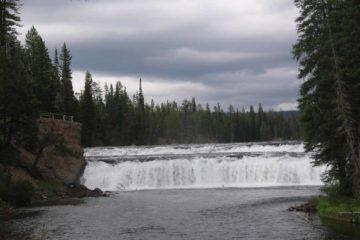
One of the most recognizable yet somewhat unconventional methods of classifying waterfalls is by their type, primarily defined by their manner of descent. Many waterfalls often fall into multiple categories.
A block waterfall descends from a broad river. An example of a block waterfall is Niagara Falls, situated on the Niagara River, spanning the United States and Canada.

A cascade represents a waterfall that gracefully descends over a sequence of rocky terraces. An instance of a cascade is Monkey Falls, found within the Indira Gandhi Wildlife Sanctuary and National Park in Tamil Nadu, India. This gently sloping feature provides a safe environment for children to frolic in the water.
A cataract, in contrast, embodies a forceful and potentially perilous waterfall. Among the most expansive and awe-inspiring cataracts are the thundering Iguazu River Falls located on the border between Brazil and Argentina.
Meanwhile, a chute characterizes a waterfall where the watercourse narrows considerably, compelling water to surge through at exceptionally high pressure. Three Chute Falls in Yosemite National Park, California, derives its name from the three narrow “chutes” through which Tenaya Creek plummets.

Fan waterfalls are named for their shape. Water spreads out on a level plane as it drops. Virgin Falls is a striking fan waterfall on Tofino Creek, Vancouver Island, British Columbia, Canada.

Frozen waterfalls are precisely as the term suggests: waterfalls that solidify during a portion of the year. These icy formations often serve as challenging endeavors for mountain enthusiasts who undertake frozen waterfall climbing to test their skills. An exemplar of such frozen beauty is The Fang, a solitary pillar of ice in Vail, Colorado, that descends vertically for over 30 meters (100 feet).

Horsetail waterfalls maintain a connection with the solid rock that underlies them. An illustration of a horsetail waterfall is Reichenbach Falls, located along the Reichenbach Stream in Switzerland, which is famously associated with the dramatic fall of the legendary detective Sherlock Holmes.
Multi-step waterfalls, on the other hand, encompass a sequence of interconnected cascades, each accompanied by its own plunge pool. The captivating “falling lakes” within Plitvice Lakes National Park in Croatia exemplify a series of multi-step waterfalls that contribute to its breathtaking beauty.
In contrast, plunge waterfalls detach from the underlying rock. The towering Hannoki Falls in Japan, measuring 497 meters (1,640 feet) in height, is a prime example of a plunge waterfall. This majestic cascade is periodically augmented by snowmelt originating from the Tateyama Mountains.
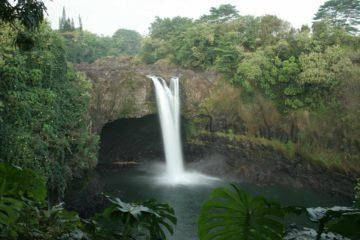
Punchbowl waterfalls are characterized by their expansive plunge pools at the foot. An illustration of this type is Wailua Falls, situated on the island of Kauai, Hawaii. While the calm plunge pool is inviting for swimming, caution is advised within the vicinity of Wailua Falls due to potential hazards.
In the realm of segmented waterfalls, the flowing water is channeled into distinct streams, partitioned by substantial outcroppings of solid rock. Nigretta Falls, a segmented waterfall located in Victoria, Australia, exemplifies this phenomenon as its surges are divided before converging into a vast plunge pool.
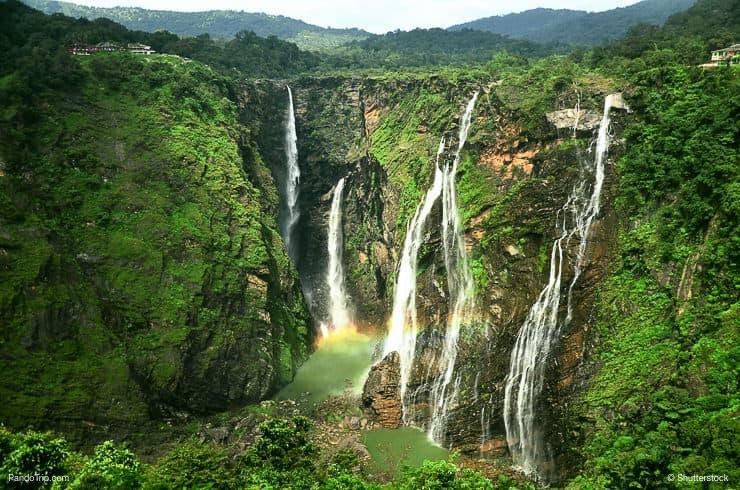
Location of Famous Waterfalls
Jog Falls, India

Nestled within the expanse of Karnataka, the magnificent Jog (or Joga) Falls awaits discovery – heralded as the second steepest waterfall across all of India. Standing at an imposing height of 830 feet (253 meters), these falls unveil captivating vistas of cascading waters amidst an incredibly verdant Indian panorama. For those with an unwavering fascination for waterfalls traversing through India, Jog Falls indisputably merits a prominent spot on your itinerary.
Sutherland Falls, New Zealand
Nestled discreetly within New Zealand’s South Island lies the breathtaking Sutherland Falls. While the debate lingers over whether Sutherland Falls claims the title of New Zealand’s loftiest, standing regally at an impressive 1,904 feet (580 meters), it undeniably possesses a grandeur capable of astonishing even the most discerning admirer. Although Sutherland Falls has been scaled since 1890, numerous adventurers still marvel at the remote and unexpected route that nature weaves through the Milford Track. This is particularly true during New Zealand’s winter season, regarded as the off-peak period, known for its sporadic weather patterns.
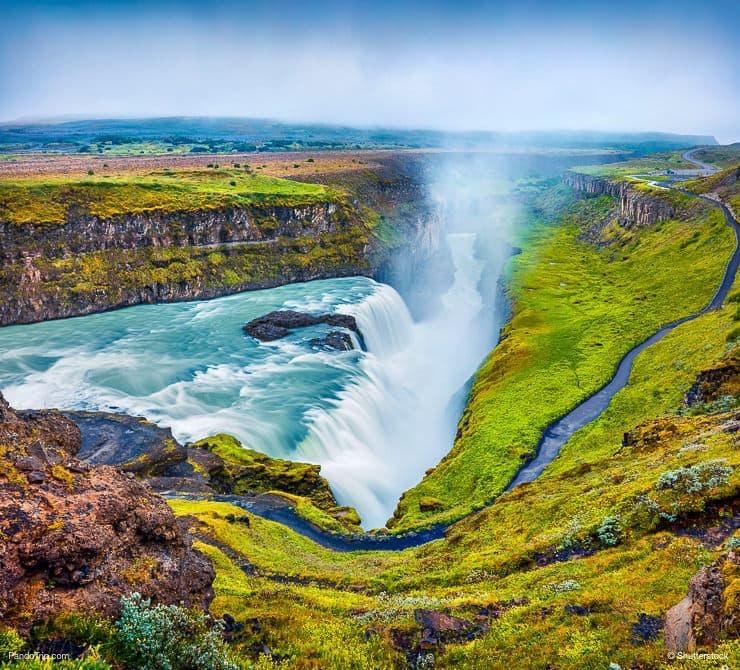
Gullfoss Falls, Iceland
Amidst the coursing currents of Iceland’s mighty Olfusa River, Gullfoss Falls stands as a symbol of the nation’s striking natural beauty, sculpted by the icy touch of its environment. This iconic waterfall, often admired from an aerial perspective, presents a breathtaking spectacle: the cascade appears as if the water hurtling off the precipice is vanishing into thin air like an ethereal phantom. Despite once being considered as a potential energy source due to its impressive might, the waterfall’s course spans a mere 104 feet (32 meters). Yet, do not be misled by the modest measurements, for it is the sheer force of the surging water that renders Gullfoss an essential attraction for any traveler.
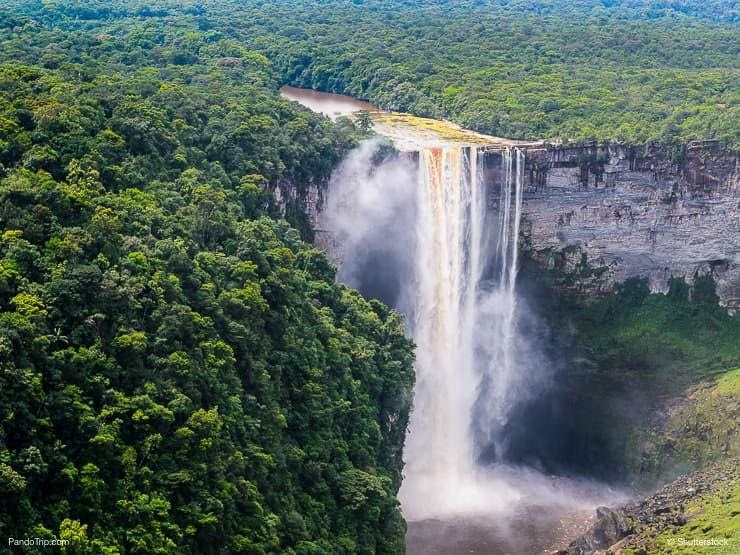
Kaieteur Falls, Guyana
Nestled deep within the heart of the Amazon, Kaieteur Falls is hailed as one of the Amazon rainforest’s most cherished treasures and a gem of South America as a whole. It also holds the distinction of being the largest waterfall in terms of water volume in a single drop, so be prepared for a refreshing mist! Standing tall at 741 feet (226 meters), Kaieteur provides a remarkable glimpse into the awe-inspiring marvels of nature, along with a touch of extraordinary adventure. However, despite its remote location, do not be deceived; Kaieteur was discovered in 1870 and has since become an undeniable highlight of any adventurous journey.
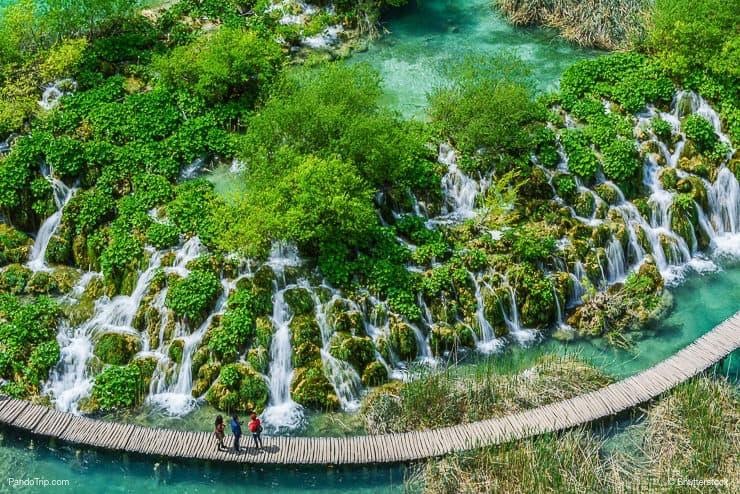
Plitvice Falls, Croatia
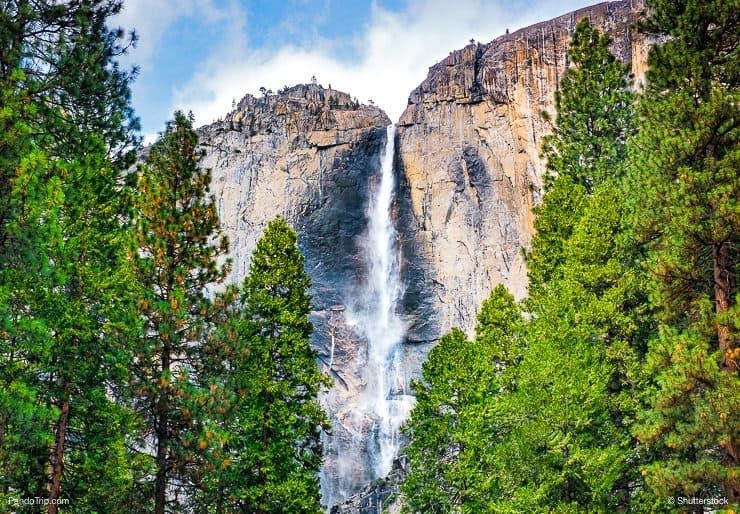
When the concept of waterfalls comes to mind, Eastern Europe may not be your initial thought. However, overlooking the enchanting Plitvice Falls in Croatia would be a novice’s oversight. Nestled within Plitvice Lakes National Park, the largest national park in Croatia, Plitvice Falls boasts an impressive height of 255 feet (77 meters), rendering it a captivating spectacle! Just inquire from the approximately 1 million visitors who have been embarking on a pilgrimage to witness these stunning falls annually since 1949.
Yosemite Falls, California, USA
Rare is the individual who has ventured into the splendid splendor of California’s Yosemite National Park and not found themselves awestruck. Even rarer are those who have gazed upon the grandeur of Yosemite’s truly towering waterfalls, which boast an astounding height of 2,425 feet (740 meters), and not returned with enthusiastic praises. Yosemite Falls is nothing short of immense and exquisitely stunning. While the ascent to the upper falls may prove demanding, the experience is unquestionably rewarding. However, its grandeur is substantial enough to be appreciated even by those who choose not to undertake the journey to its summit.
Niagara Falls, New York and Ontario
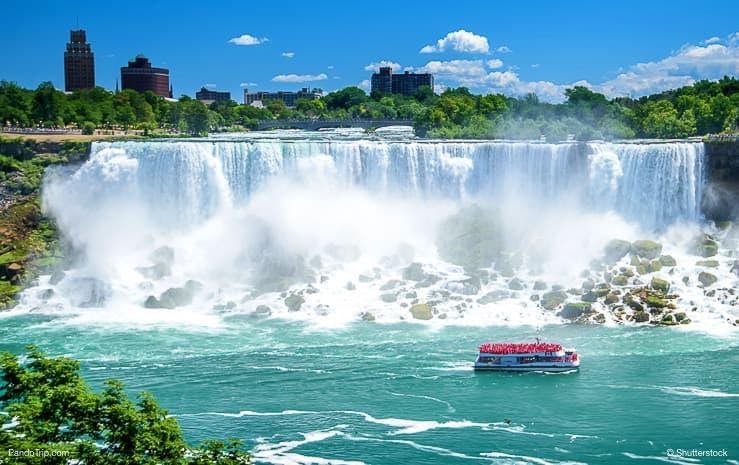
When does a waterfall transform into a dual-nation excursion without any additional cost? The answer lies with the mighty Niagara Falls, a renowned marvel that straddles the border between the United States (via New York State) and Ontario, Canada. Soaring to a staggering height of 167 feet (or 99 meters, for our Canadian friends), these falls are equally impressively long, seemingly stretching into eternity. While the Canadian side offers a bustling tourist town perfect for a weekend getaway, the American side predominantly treats visitors to natural, scenic vistas. Both sides warrant a visit to fully appreciate the breathtaking sight of the falls.
Angel Falls, Venezuela
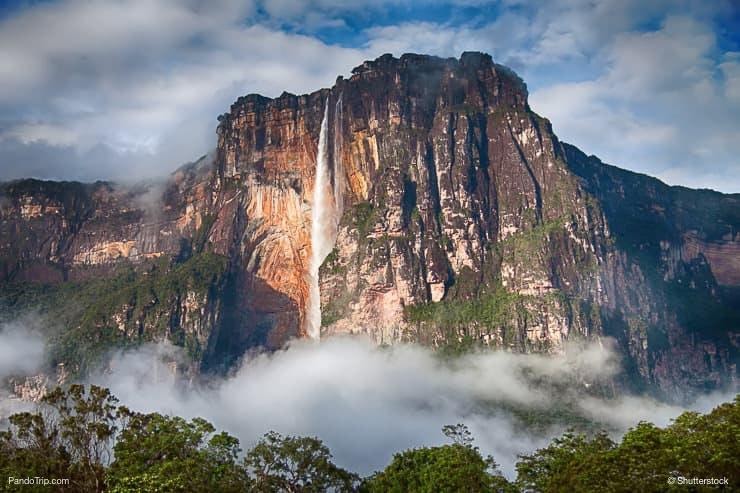
Standing at an awe-inspiring 3,210 feet (978 meters), Angel Falls reigns supreme as the world’s most awe-inspiring solitary waterfall and proudly claims the title of the tallest waterfall on our list! For those venturing to Venezuela, it stands as an absolute must-see attraction. As if its sheer height wasn’t already captivating, Angel Falls has also earned the prestigious designation of a UNESCO World Heritage Site and is said to have been discovered by the renowned explorer Sir Walter Raleigh during his quest for the mythical city of El Dorado. Modern-day visitors to the falls are in for a remarkable upriver journey, as Angel Falls still remains wonderfully remote. Yet, intrepid waterfall enthusiasts will be richly rewarded with the opportunity to witness one of the most breathtaking wonders on our planet.
Iguazu Falls, Argentina and Brazil
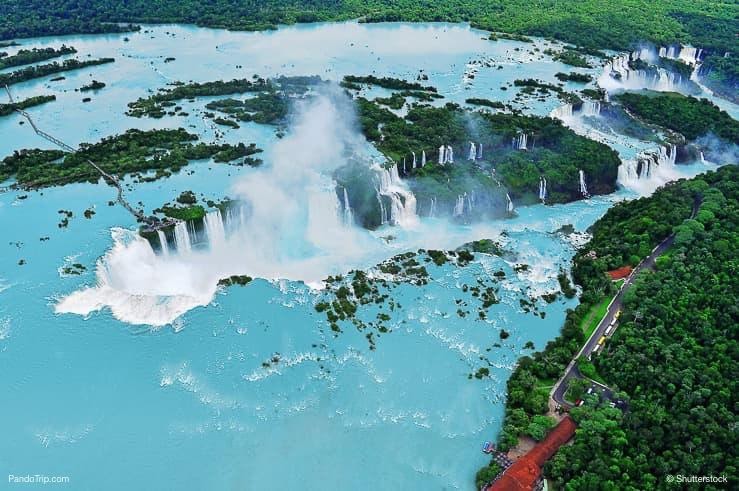
Similar to the case with Niagara Falls, Iguazu Falls stands as a dual-nation marvel, straddling the border between Argentina and Brazil. Yet, if the allure of obtaining two stamps in your passport isn’t incentive enough, these Falls hold the distinction of being the largest waterfall system in the world. Despite its height measuring a modest 269 feet (82 meters), the cascading curtain of water extends over an impressive distance of 5,249 feet (1,600 meters). In fact, it stretches so far that legend has it that upon witnessing it, Eleanor Roosevelt exclaimed, “Poor Niagara!” Skeptical? Why not witness it firsthand and form your own impression?
Victoria Falls, Zambia and Zimbabwe
It comes as no surprise that the top spot on the list is reserved for the world’s most renowned waterfall: the iconic Victoria Falls. Positioned on the border of Zambia and Zimbabwe, these falls can be accessed from the Western Zimbabwe town bearing the same name. But why does Victoria Falls claim the number one position? Although not the tallest (standing at a mere 355 feet or 107 meters) or the widest, Victoria Falls is acclaimed as the largest waterfall on the planet due to its awe-inspiring curtain of rapidly descending water. These falls have earned a place of distinction, and numerous travelers to Africa embark on a special journey to Zambia or Zimbabwe solely to witness views often described as “unparalleled” by many. Having gained fame as a sought-after tourist destination since the turn of the last century, the reputation of Victoria Falls has only grown in recent times, and it is likely to continue flourishing in the years ahead.
Read more about the Long Profile of a River

Frequently Asked Questions
How are waterfalls formed?
Waterfalls form when a river flows over a resistant rock layer followed by a softer rock layer, leading to differential erosion and the creation of a vertical drop.
What determines the height and size of a waterfall?
The height and size of a waterfall depend on factors such as the gradient of the river, the volume of water, and the characteristics of the underlying rock layers.
What are some famous examples of waterfalls around the world?
Notable waterfalls include Niagara Falls (USA/Canada), Victoria Falls (Zambia/Zimbabwe), and Angel Falls (Venezuela), the world’s tallest waterfall.
How are segmented, block, and plunge waterfalls different from each other?
Segmented waterfalls flow over a series of ledges, block waterfalls have a wide, rectangular profile, and plunge waterfalls drop vertically.
How do erosional and depositional features contribute to waterfall formation?
Erosional features like plunge pools deepen over time, while depositional features like talus slopes may form at the base of waterfalls.
References
- Top 10 Most Beautiful Waterfalls in the World. (n.d.). Retrieved from PANDOTRIP: https://www.pandotrip.com/top-10-most-beautiful-waterfalls-in-the-world-709/
- Waterfall. (n.d.). Retrieved from National Geographic: https://www.nationalgeographic.org/encyclopedia/waterfall/What Types Of Waterfalls Are There? (n.d.). Retrieved from World of Waterfalls: https://www.world-of-waterfalls.com/what-types-of-waterfalls-are-there/
